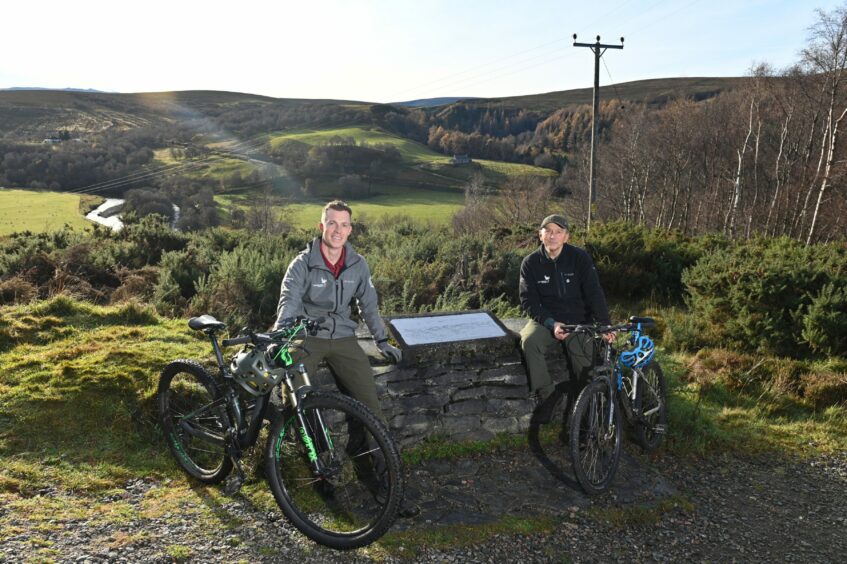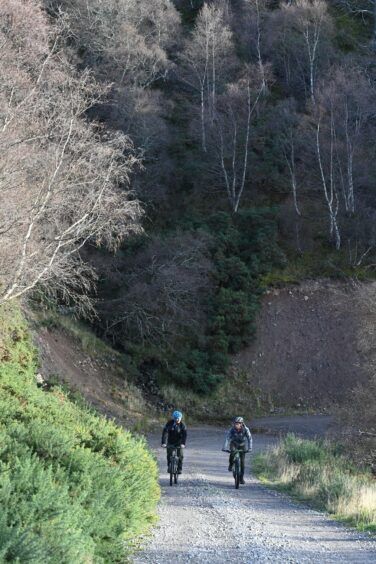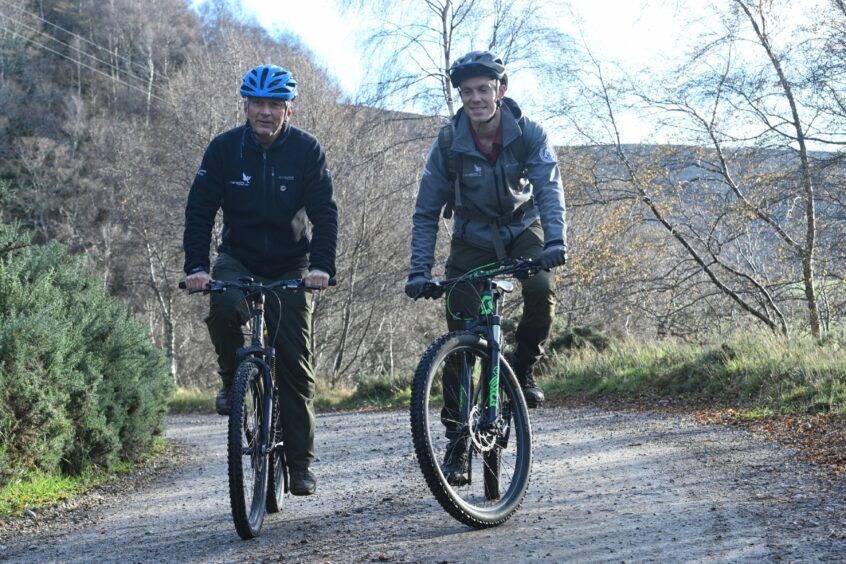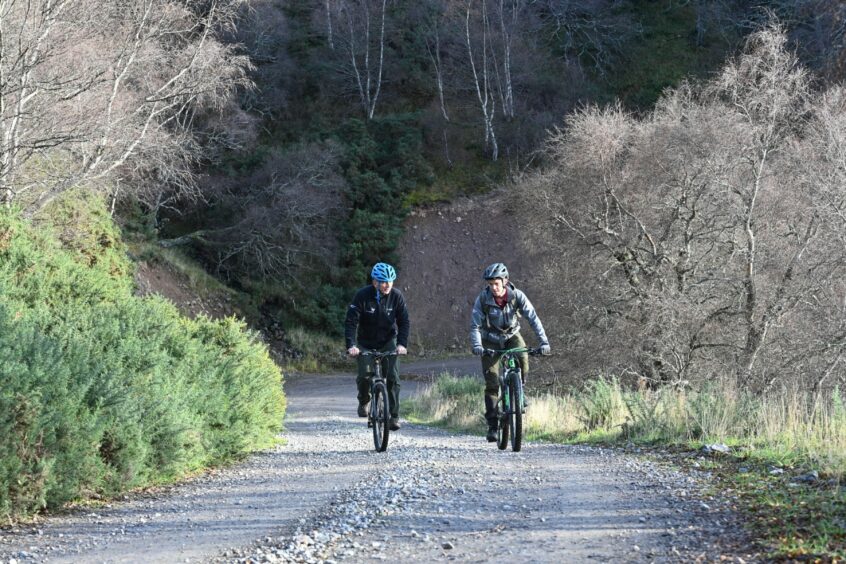Rangers across the Cairngorms are swapping cars for bikes to help encourage fossil fuel-free travel within the national park.
Cairngorms National Park Authority (CNPA) rangers have used bicycles for years in their work across the region.
But now, as part of efforts to reduce the CNPA’s carbon footprint, they have redoubled their commitment to pedal power.
By getting on their bikes instead of driving vehicles, Cairngorms rangers hope to encourage more active travel in the park.
One bike-riding ranger’s personal experience
Pete Short, a national park ranger in the Cairngorms based at Nethy Bridge, uses his bike to patrol areas like Loch Garten, Grantown, and the Speyside Way.
Since he opted to prioritise pedalling over using a car, Mr Short says he has found all sorts of advantages for his work.
This summer, Mr Short received reports of a fire about two miles away from the nearest road.
By biking to the scene, he said he was able to attend and bring the incident under control more rapidly than he would have in a vehicle.
He said: “Earlier in the year we were looking at all our carbon expenditure within the national park, and as a ranger service we actually expend quite a lot of CO2 just driving around.
“So one of the ways we’re reducing that is by swapping our cars for our bikes.
“It allows us to get quite far afield and get on tracks where a vehicle just really isn’t appropriate.”
Helping to improve cycle paths
As well as helping rangers like Mr Short nip about the Cairngorms quickly, the initiative is also designed to encourage residents and visitors alike to cycle.
And by testing out bike routes in the communities he works in, Mr Short can help identify where work needs done to make them better.
He continued: “The rangers are out and about all the time, so we can see what trails are suitable and identify where there’s room for improvement.
“The response has been overwhelmingly positive from the general public when we’ve told them about how we’re using our bikes.
“It’s also allowed us to engage more easily with cyclists.
“When we’re out on patrol and walking, cyclists can often overtake us, but when we’re on our bikes ourselves, there’s common ground there.”
Here’s how you can have your say on the future of transport in the Cairngorms
The CNPA is running a consultation on its draft National Park Partnership Plan, which will have a big impact on the future of the region.
From work to tackle climate change to boosting affordable housing numbers, the plan covers a wide variety of changes for how the park will operate going forwards.
Included in its plans are the CNPA’s objectives for active travel, such as linking all communities by “safe off-road or segregated on-road routes” by 2030.
The authority’s head of visitor services Pete Crane has encouraged everyone with an interest to make their voices heard and take part in the consultation.
He said: “We’re currently undertaking consultation with the public and we want people to feedback to us on the national park partnership plan, which is what’s going to change in the next five years and beyond in the national park.
“And one of the key things that’s coming out from both residents and visitors is improving active travel.”
The CNPA’s consultation runs until December 17.
To have your say, click here.



